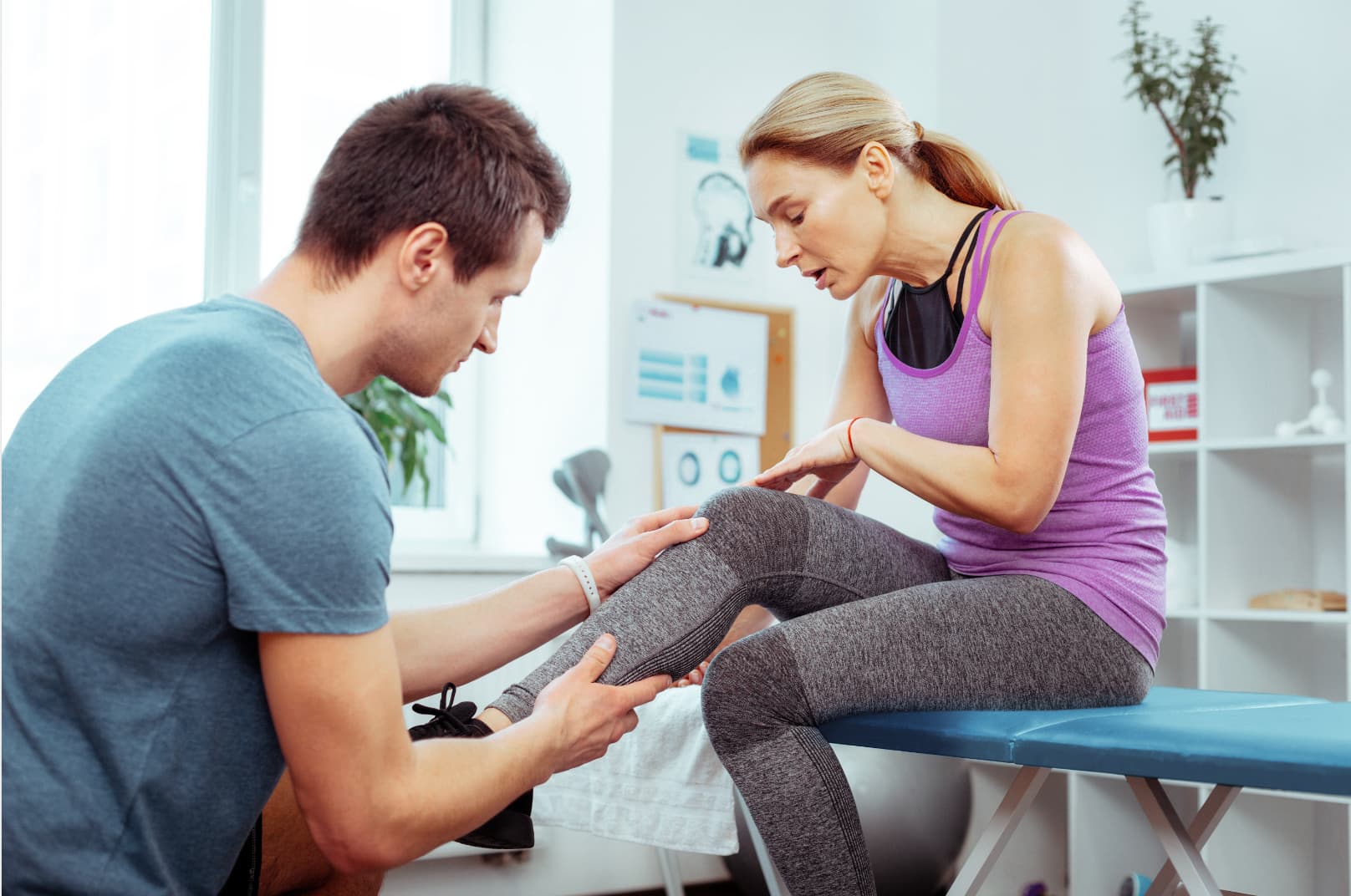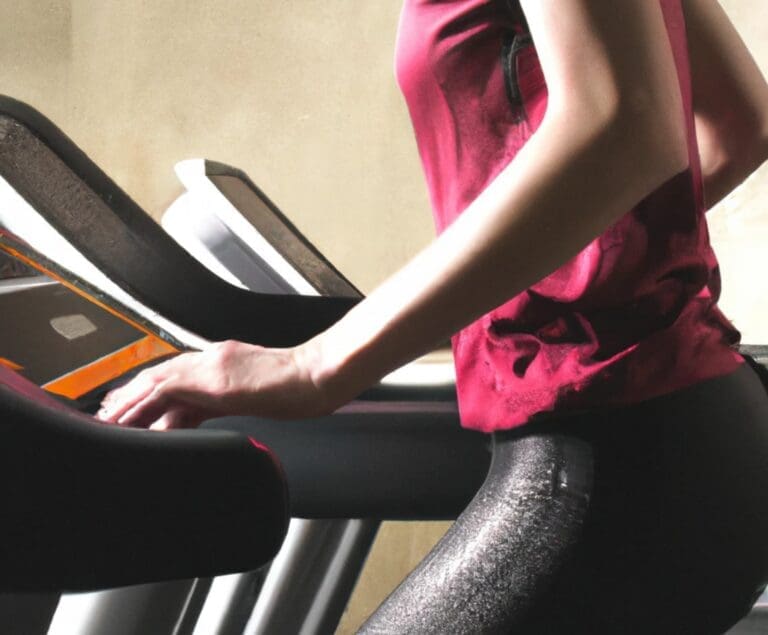Introduction
Hey there, fitness enthusiasts! It’s Holly from Holly Roser Fitness, your go-to personal trainer in San Mateo and New York City. Today, we’re diving deep into a topic that’s close to my heart (and probably your muscles): injury recovery. Whether you’re a weekend warrior or a seasoned athlete, understanding how to bounce back from muscle injuries is crucial for maintaining your fitness journey.
In this comprehensive guide, we’ll explore the fascinating science behind injury recovery and provide you with actionable advice to get you back on your feet (or back to lifting those weights) safely and effectively. So, let’s flex our mental muscles and get started!
Understanding Muscle Injuries
Types of Muscle Injuries
Before we jump into recovery strategies, it’s essential to understand what we’re dealing with. Muscle injuries typically fall into three categories:
- Strain: A stretching or tearing of muscle fibers
- Contusion: A direct blow to the muscle, often resulting in bruising
- Laceration: A cut or tear in the muscle tissue
Each type of injury requires a slightly different approach to recovery, but the underlying principles remain similar.
The Healing Process: Your Body’s Natural Recovery Mechanism
When a muscle injury occurs, your body immediately kicks into high gear. The healing process typically involves three overlapping phases:
- Inflammatory Phase: This begins immediately after injury and lasts for about 2-4 days. Your body sends blood and nutrients to the injured area, causing swelling and pain.
- Proliferative Phase: Starting around day 2 and lasting up to 3 weeks, new tissue begins to form.
- Remodeling Phase: This final phase can last for months or even years, as the new tissue gradually becomes stronger and more flexible.
Understanding these phases is crucial for timing your recovery strategies effectively. But don’t worry, we’ll get into the nitty-gritty of that soon!
The Science of Recovery: What Research Tells Us
Now, let’s dive into some cutting-edge research that’s shaping our understanding of muscle injury recovery.
The Role of Nutrition in Muscle Recovery
You’ve probably heard the saying, “You are what you eat.” Well, when it comes to muscle recovery, this couldn’t be more true. A recent study published in the Journal of the International Society of Sports Nutrition sheds light on the importance of nutrition in muscle repair:
“Optimal nutritional intake can enhance muscle repair and remodeling following injury by modulating the inflammatory response, promoting muscle protein synthesis, and supporting the regeneration of damaged tissue.”
The study emphasizes the importance of protein intake, particularly essential amino acids, in supporting muscle repair. It also highlights the potential benefits of omega-3 fatty acids in reducing inflammation and promoting healing.
(Heaton, L. E., Davis, J. K., Rawson, E. S., Nuccio, R. P., Witard, O. C., Stein, K. W., … & Baker, L. B. (2017). Selected In-Season Nutritional Strategies to Enhance Recovery for Team Sport Athletes: A Practical Overview. Sports Medicine, 47(11), 2201-2218.)
The Power of Progressive Loading
As we progress through our recovery journey, it’s crucial to gradually increase the load on our healing muscles. This concept, known as progressive loading, is supported by a fascinating study in the Journal of Orthopaedic & Sports Physical Therapy:
“Early, targeted, and progressive loading of muscle and tendon during rehabilitation can optimize tissue repair and remodeling.”
The researchers found that carefully controlled, progressive loading can stimulate tissue healing and improve functional outcomes. This means that, contrary to popular belief, complete rest isn’t always the best approach to recovery.
(Warden, S. J., & Thompson, W. R. (2017). Become one with the force: optimising mechanotherapy through an understanding of mechanobiology. British Journal of Sports Medicine, 51(13), 989-990.)
Practical Strategies for Safe and Effective Recovery
1. The PRICE Protocol: Your First Line of Defense
When injury strikes, remember PRICE:
- Protection
- Rest
- Ice
- Compression
- Elevation
This tried-and-true method can help manage pain and swelling in the initial stages of injury. However, remember that prolonged rest can be counterproductive. As soon as it’s safe to do so, gentle movement can promote healing and prevent muscle atrophy.
2. Nutrition: Fuel Your Recovery
Based on the research we discussed earlier, here are some nutritional strategies to support your recovery:
- Increase your protein intake, aiming for about 1.6-2.2 grams per kilogram of body weight per day
- Focus on foods rich in omega-3 fatty acids, such as salmon, chia seeds, and walnuts
- Don’t skimp on carbohydrates – they’re essential for energy during the healing process
- Stay hydrated to support cellular functions and nutrient transport
Remember, these are general guidelines. For personalized nutrition advice, consider booking a consultation with Holly Roser Fitness. We can tailor a nutrition plan to your specific needs and injury type.
3. Progressive Loading: The Art of Gradual Return
Once you’ve gotten the green light from your healthcare provider, it’s time to start rebuilding strength. Here’s a general framework for progressive loading:
- Isometric exercises: These involve contracting the muscle without movement, which can help maintain strength with minimal stress on the injured area.
- Range of motion exercises: Gradually increase the range of motion to improve flexibility and prevent stiffness.
- Resistance training: Start with light weights or resistance bands and gradually increase as your strength improves.
- Functional exercises: Incorporate movements that mimic your daily activities or sport-specific actions.
Remember, the key word here is “progressive.” Listen to your body and don’t rush the process!
The Role of Sleep in Muscle Recovery
While we often focus on what we do when we’re awake, what happens when we’re asleep is equally crucial for recovery. A groundbreaking study published in the Journal of Science and Medicine in Sport highlights the importance of sleep in muscle recovery:
“Sleep plays a vital role in muscle recovery through protein synthesis, hormone release, and the reduction of protein degradation.”
The researchers found that sleep deprivation can significantly impair muscle recovery and performance. They recommend aiming for 7-9 hours of quality sleep per night to optimize recovery.
(Watson, A. M. (2017). Sleep and Athletic Performance. Current Sports Medicine Reports, 16(6), 413-418.)
Tips for Improving Sleep Quality
To make the most of your recovery sleep, try these strategies:
- Stick to a consistent sleep schedule, even on weekends
- Create a relaxing bedtime routine
- Keep your bedroom cool, dark, and quiet
- Avoid screens for at least an hour before bed
- Limit caffeine and alcohol, especially in the evening
The Mental Game: Psychological Aspects of Injury Recovery
Recovery isn’t just about physical healing – your mind plays a crucial role too. A fascinating study in the Journal of Athletic Training explores the psychological aspects of injury recovery:
“Psychological factors, including attitude, coping strategies, and social support, significantly influence injury recovery outcomes and return-to-play readiness.”
The researchers found that athletes with a positive attitude, effective coping strategies, and strong social support systems tended to recover faster and more completely from their injuries.
(Podlog, L., Heil, J., & Schulte, S. (2014). Psychosocial factors in sports injury rehabilitation and return to play. Physical Medicine and Rehabilitation Clinics, 25(4), 915-930.)
Strategies for Mental Recovery
Here are some ways to support your psychological recovery:
- Set realistic goals: Break your recovery into small, achievable milestones
- Practice visualization: Imagine yourself healing and returning to your activities
- Maintain social connections: Stay in touch with teammates, training partners, or your personal trainer
- Consider mindfulness or meditation: These practices can help manage stress and improve focus
- Seek professional help if needed: Don’t hesitate to talk to a sports psychologist if you’re struggling mentally
The Role of Technology in Injury Recovery
In today’s digital age, technology is playing an increasingly important role in injury recovery. From wearable devices that track your progress to apps that guide you through rehabilitation exercises, there are numerous tools at your disposal.
At Holly Roser Fitness, we stay up-to-date with the latest technological advancements to provide our clients with cutting-edge recovery strategies. Whether it’s using advanced movement analysis software or recommending the best recovery tracking apps, we’re here to support your tech-savvy healing journey.
Popular Recovery Tech Tools
- Wearable fitness trackers: Monitor your activity levels and sleep quality
- Recovery-focused apps: Guide you through stretching and rehabilitation exercises
- Electrical muscle stimulation devices: Can help reduce pain and promote muscle activation
- Foam rollers and massage guns: Aid in myofascial release and muscle recovery
Remember, while these tools can be helpful, they should complement, not replace, professional guidance. Always consult with your healthcare provider or personal trainer before incorporating new recovery tools into your routine.
When to Seek Professional Help
While many minor muscle injuries can be managed at home, there are times when professional help is necessary. Here are some signs that it’s time to see a doctor or physical therapist:
- Severe pain or swelling that doesn’t improve with home treatment
- Inability to bear weight on the injured area
- Numbness or tingling in the injured area or beyond
- Visible deformity or severe bruising
- Lack of improvement after several days of home care
Remember, it’s always better to err on the side of caution when it comes to your health and fitness. As a personal trainer in San Mateo and Manhattan, I always encourage my clients to listen to their bodies and seek professional help when needed.
Conclusion: Your Journey to Recovery
Recovering from a muscle injury can be a challenging journey, but armed with the right knowledge and strategies, you can navigate it successfully. Remember, recovery is not just about healing – it’s an opportunity to come back stronger, both physically and mentally.
By understanding the science behind injury recovery, following evidence-based strategies, and listening to your body, you can turn this setback into a comeback. And remember, you don’t have to go through this journey alone. Whether you’re in San Mateo, NYC or beyond, Holly Roser Fitness is here to support you every step of the way.
Call to Action
Ready to take your recovery to the next level? At Holly Roser Fitness, we specialize in guiding clients through safe and effective injury recovery. Whether you’re dealing with a recent injury or looking to prevent future ones, our personalized approach can help you achieve your fitness goals.
Don’t let injuries hold you back. Book a consultation with Holly Roser Fitness today, and let’s create a recovery plan that works for you. Together, we’ll get you back to doing what you love, stronger and more resilient than ever!
References
- Heaton, L. E., Davis, J. K., Rawson, E. S., Nuccio, R. P., Witard, O. C., Stein, K. W., … & Baker, L. B. (2017). Selected In-Season Nutritional Strategies to Enhance Recovery for Team Sport Athletes: A Practical Overview. Sports Medicine, 47(11), 2201-2218.
- Warden, S. J., & Thompson, W. R. (2017). Become one with the force: optimising mechanotherapy through an understanding of mechanobiology. British Journal of Sports Medicine, 51(13), 989-990.
- Watson, A. M. (2017). Sleep and Athletic Performance. Current Sports Medicine Reports, 16(6), 413-418.
- Podlog, L., Heil, J., & Schulte, S. (2014). Psychosocial factors in sports injury rehabilitation and return to play. Physical Medicine and Rehabilitation Clinics, 25(4), 915-930.









